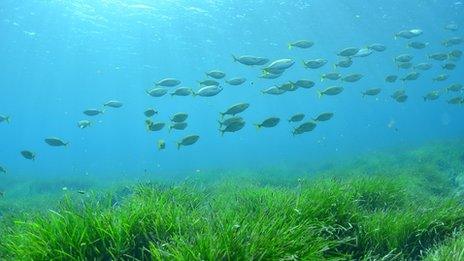Important Orkney seagrass meadow mapped for first time
- Published
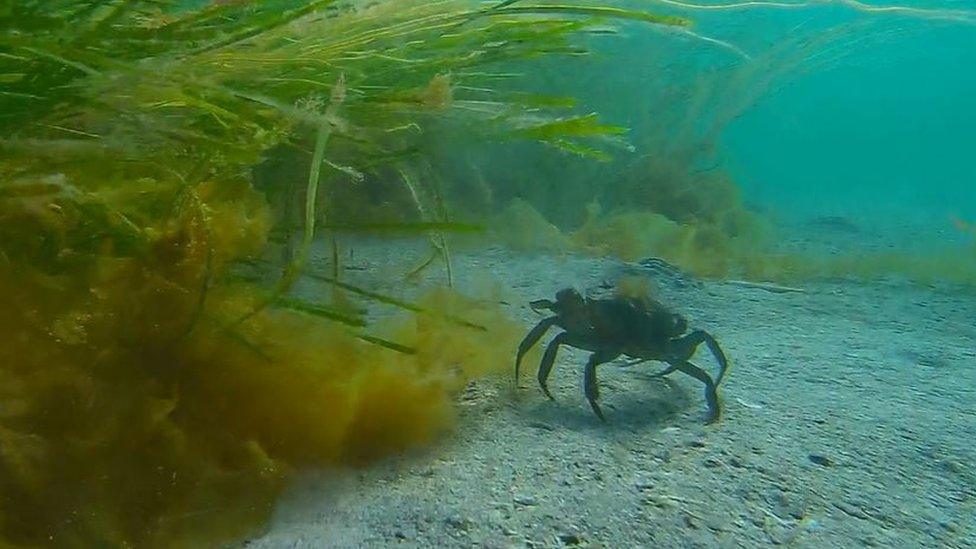
Seagrass provides an important home for many marine species - including crabs
Greenpeace and Scottish campaign group Open Seas have, for the first time, documented an "important" seagrass meadow in Orkney.
The investigation was carried out at the suggestion of local woman Catherine Chattington who is "delighted" at the findings.
Phil Taylor from Open Seas says seagrass has experienced serious declines in recent years,
"We can't protect these habitats unless we know they are there", he added.
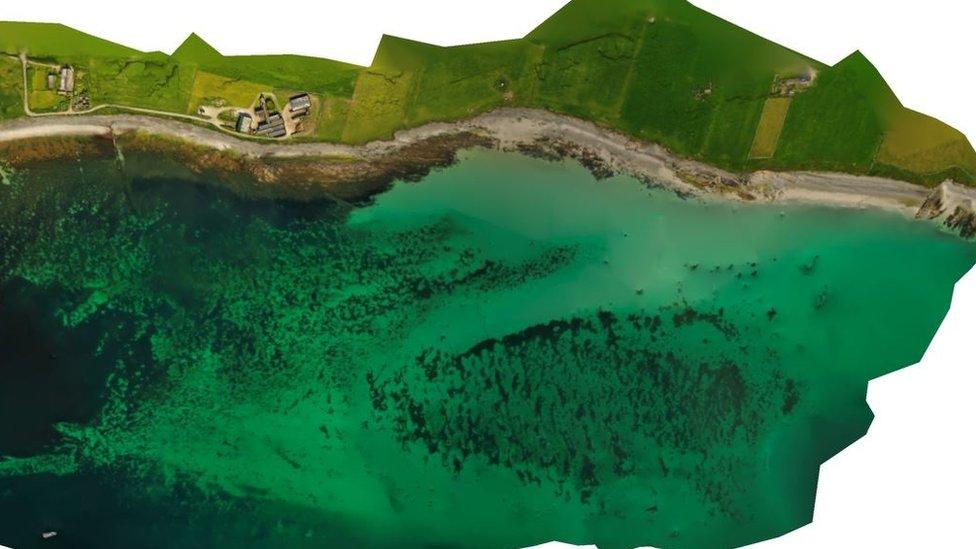
Stitching together a composite image made up of hundreds of drone pictures gives the first record of the scale and importance of the seagrass bed off Papay
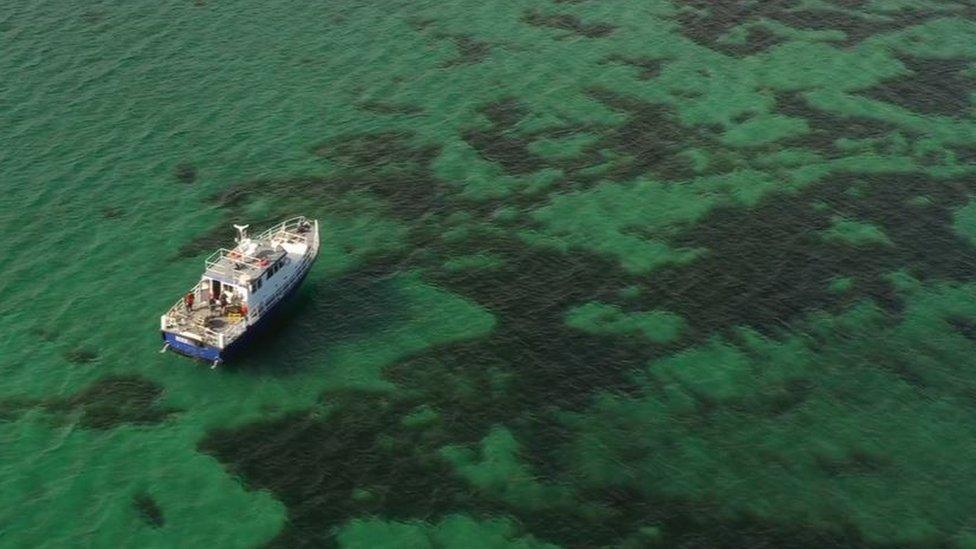
The research was carried out in Orkney by the Greenpeace ship "Sea Beaver" for Scottish campaign group Open Seas
The seagrass meadow, measuring half a mile by a quarter of a mile - or 30 hectares in total - is off the south of the island of Papa Westray (locally known as Papay).
It was surveyed by the crew of the Sea Beaver who stitched together hundreds of drone images to produce a composite that shows its full extent.
The vessel also used an undersea submersible and a sonar side scan to capture images of the habitat, and the marine species that live there.
Seagrass is important for juvenile fish, plays a role in stabilising the seabed, and captures huge amounts of carbon under the sea, preventing it from entering the atmosphere.
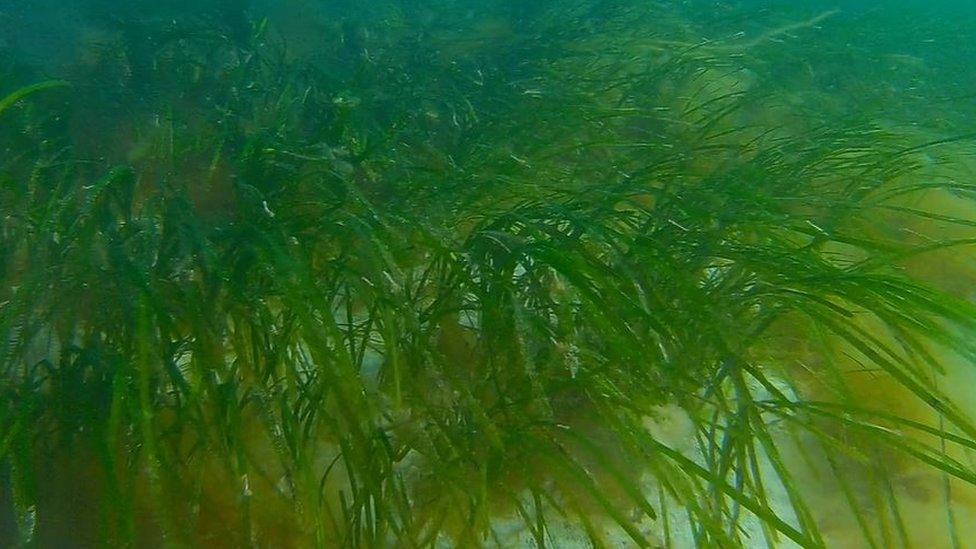
Researchers say seagrass locks carbon under the ocean and stops it from getting into the atmosphere
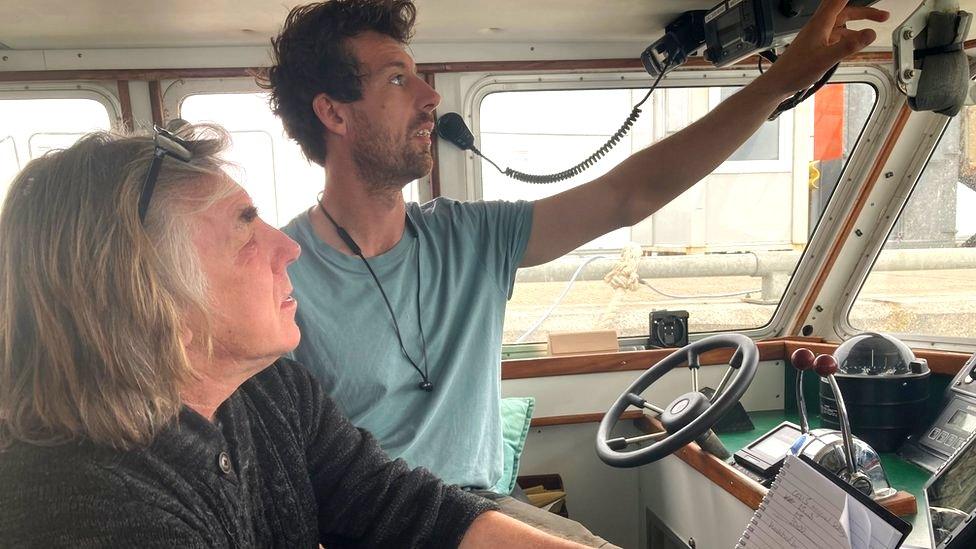
Skipper Rob Salvidge (L) and Neil Hennessey (R) make up half of the crew on board the Sea Beaver
Catherine Chattington told BBC Radio Orkney that the monitoring allowed researchers to see the extent and the health of the seagrass.
"Monitoring these things can tell a lot about the state of the marine environment and the water," she said.
"We've all seen films by David Attenborough etc, but when we live here, and we're getting on with our own lives, we're maybe not paying enough attention to what's around us.
"Actually, the health of the sea is very important for the whole environment of Papay"
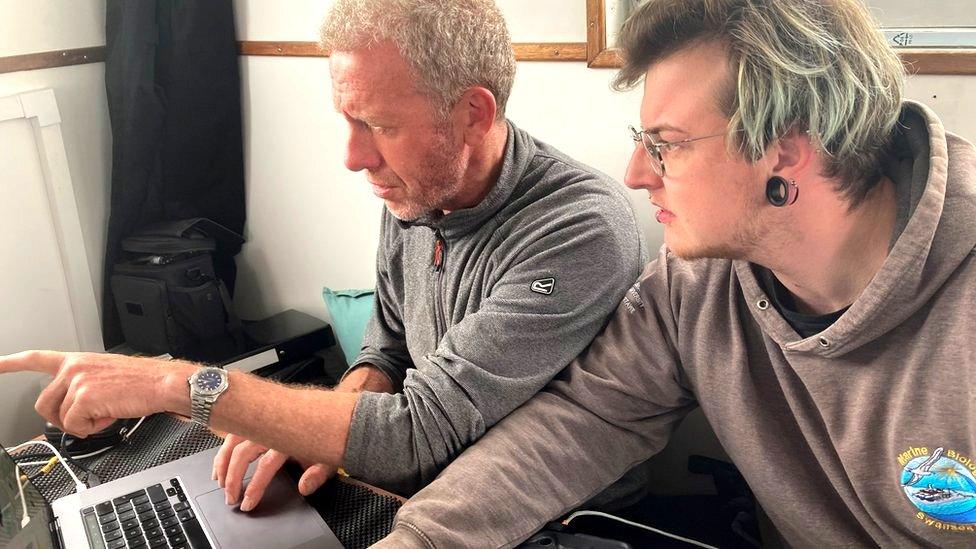
Rohan Holt (L) and Theo Bennison (R) examine images captured by the Sea Beaver's underwater and aerial drones
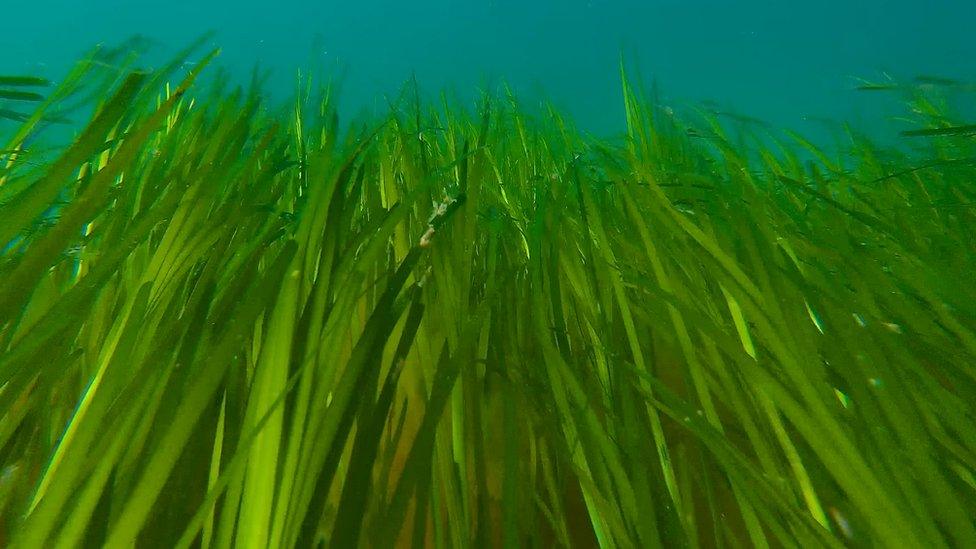
Seagrass is also important as a habitat for juvenile fish and plays a role in stabilising sediment
But Rohan Holt, research officer for Open Seas, said: "Knowing what's on the seabed, we're way behind compared to what we've seen on land.
"We're maybe 200 years behind in the way that we map things on the seabed, compared to what we know elsewhere."
Theo Bennison, who was also on board the ship for the survey, said: "The other issue is the fact that a lot of the habitat will already be gone. It's not in the historic state that it was naturally.
"So a lot of the knowledge is actually lost to us already, which is very unfortunate."
It is hoped surveys like this will help to establish a baseline, so future changes - and the impact of human intervention including fish farms or different fishing methods - can be assessed more accurately.
Seagrass is the only flowering plant in the marine world, and was once a common habitat around the coastline and throughout UK waters.
Scottish waters support an estimated one fifth of the seagrass beds in north-west Europe.
Related topics
- Published7 June 2022
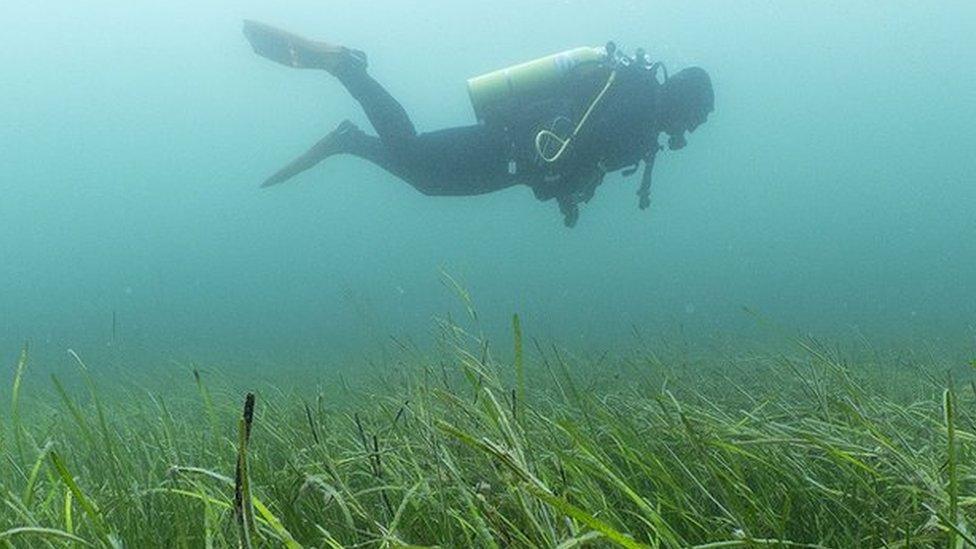
- Published13 March 2021
